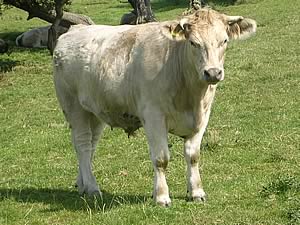 |
|||||||||
|
|||||||||||||||||||
| Export
fuelled price rises not enough on own to rescue beef industry 08/05/06 Short supplies of cow beef in Europe, and the inability of the major supermarkets to source as much discounted steak as they would like from South America this summer, will help to drive UK cattle prices upwards, the National Beef Association said today.
However it is also warning farmers not to rely entirely on the rising market to repair the damage wreaked on their businesses during ten years of total reliance on domestic sales and to continue to focus on meeting the long term challenges forced on them by decoupling through the introduction of new production efficiencies and cost reduction measures. "The restoration of exports immediately makes the beef industry's outlook much more hopeful but income lifts alone are not a guarantee of post-Cap reform survival," explained NBA chief executive, Robert Forster. "Rising stock values must not be accompanied by exactly proportionate increases in cost so attention must be paid, if it is not being done already, to basic post-decoupling management adjustments which will include significant reduction to slaughter age, producing more calves per 100 cows and housing cows for significantly shorter periods in winter." "Each of these should combine with the additional income that will come from post-export market buoyancy to give more farmers a better chance of eventually generating genuine profit and coping with the loss of direct subsidy." According to the NBA the average slaughter age for prime cattle is still stuck at 24 months when a reduction to 18 months but at the same slaughter weight could reduce feeding and management costs by £90 a head for all animals. "Also the average calving rate in the suckler herd may only be 85 per cent when a relatively modest target of 92-93 per cent would produce 7-8 more calves from every 100 cows for very little additional cost," said Mr Forster. "On top of this more farmers have already proved that cows can be housed later, fed on less expensive silage, and turned out earlier - even in a very late spring." "And we expect that the rise in dairy bred calf prices triggered by the resumption of live exports will make all beef production more secure because it will raise the cost of producing dairy beef and make suckler beef less vulnerable because the additional cost of keeping the cow to produce the calf will be less of a structural weakness." "The income benefits for suckled calf breeders from cost reduction moves and the export fuelled development in dairy beef will increase massively if the slaughter value of both the cow and the calf also increases because of more competition in the beef market but price rises on their own will not be enough to keep an inefficient farmer in business," he added.
| |||||||||||||||||||

|
|
||||||||||||||||||
| home | agri-services | pedigree
pen | news | dairy | beef | machinery property | organisations | site map |
|||||||||||||||||||

